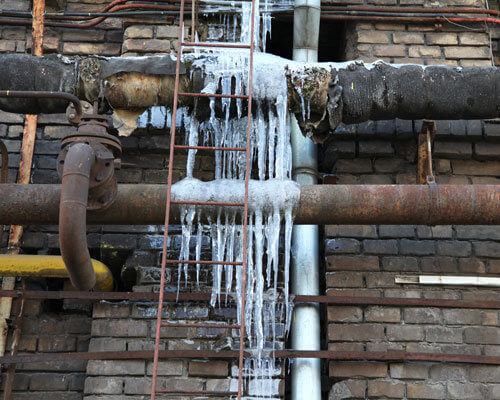How to Protect Pipes from Freezing Damage: Important Guidance
How to Protect Pipes from Freezing Damage: Important Guidance
Blog Article
Nearly everybody has got their unique theory with regards to Prevent Frozen Pipes .

Cold weather can wreak havoc on your plumbing, particularly by freezing pipelines. Below's just how to avoid it from occurring and what to do if it does.
Introduction
As temperatures decline, the danger of frozen pipes rises, possibly causing pricey repair work and water damage. Recognizing how to prevent frozen pipes is important for house owners in chilly climates.
Understanding Icy Pipes
What triggers pipelines to freeze?
Pipelines ice up when subjected to temperature levels below 32 ° F (0 ° C) for prolonged durations. As water inside the pipes freezes, it broadens, taxing the pipe walls and potentially creating them to break.
Risks and damages
Frozen pipes can bring about water supply interruptions, building damages, and expensive repairs. Burst pipes can flooding homes and create considerable architectural damages.
Indicators of Frozen Water Lines
Determining frozen pipes early can prevent them from breaking.
Just how to identify frozen pipes
Try to find decreased water circulation from faucets, unusual odors or noises from pipes, and noticeable frost on subjected pipelines.
Prevention Tips
Insulating vulnerable pipes
Wrap pipes in insulation sleeves or make use of warm tape to shield them from freezing temperatures. Concentrate on pipes in unheated or outside locations of the home.
Heating methods
Keep indoor areas adequately warmed, especially locations with pipes. Open cupboard doors to allow cozy air to circulate around pipelines under sinks.
Shielding Outside Pipes
Garden tubes and outside faucets
Separate and drain yard pipes prior to winter. Install frost-proof faucets or cover outside faucets with insulated caps.
What to Do If Your Pipelines Freeze
Immediate actions to take
If you believe icy pipelines, maintain faucets open up to ease stress as the ice thaws. Utilize a hairdryer or towels taken in hot water to thaw pipelines slowly.
Long-Term Solutions
Architectural changes
Consider rerouting pipelines far from outside walls or unheated areas. Include additional insulation to attic rooms, basements, and crawl spaces.
Updating insulation
Invest in top notch insulation for pipelines, attics, and wall surfaces. Proper insulation helps keep consistent temperature levels and lowers the threat of icy pipes.
Conclusion
Avoiding icy pipelines requires aggressive procedures and quick actions. By comprehending the causes, indicators, and preventive measures, home owners can safeguard their plumbing during cold weather.
5 Ways to Prevent Frozen Pipes
Drain Outdoor Faucets and Disconnect Hoses
First, close the shut-off valve that controls the flow of water in the pipe to your outdoor faucet. Then, head outside to disconnect and drain your hose and open the outdoor faucet to allow the water to completely drain out of the line. Turn off the faucet when done. Finally, head back to the shut-off valve and drain the remaining water inside the pipe into a bucket or container. Additionally, if you have a home irrigation system, you should consider hiring an expert to clear the system of water each year.
Insulate Pipes
One of the best and most cost-effective methods for preventing frozen water pipes is to wrap your pipes with insulation. This is especially important for areas in your home that aren’t exposed to heat, such as an attic. We suggest using foam sleeves, which can typically be found at your local hardware store.
Keep Heat Running at 65
Your pipes are located inside your walls, and the temperature there is much colder than the rest of the house. To prevent your pipes from freezing, The Insurance Information Institute suggests that you keep your home heated to at least 65 degrees, even when traveling. You may want to invest in smart devices that can keep an eye on the temperature in your home while you’re away.
Leave Water Dripping
Moving water — even a small trickle — can prevent ice from forming inside your pipes. When freezing temps are imminent, start a drip of water from all faucets that serve exposed pipes. Leaving a few faucets running will also help relieve pressure inside the pipes and help prevent a rupture if the water inside freezes.
Open Cupboard Doors
Warm your kitchen and bathroom pipes by opening cupboards and vanities. You should also leave your interior doors ajar to help warm air circulate evenly throughout your home.

As a devoted person who reads on Prevent Frozen Pipes , I figured sharing that excerpt was important. Sharing is good. Who knows, you may very well be helping someone out. Thanks a lot for your time. Revisit us soon.
Explore Now Report this page